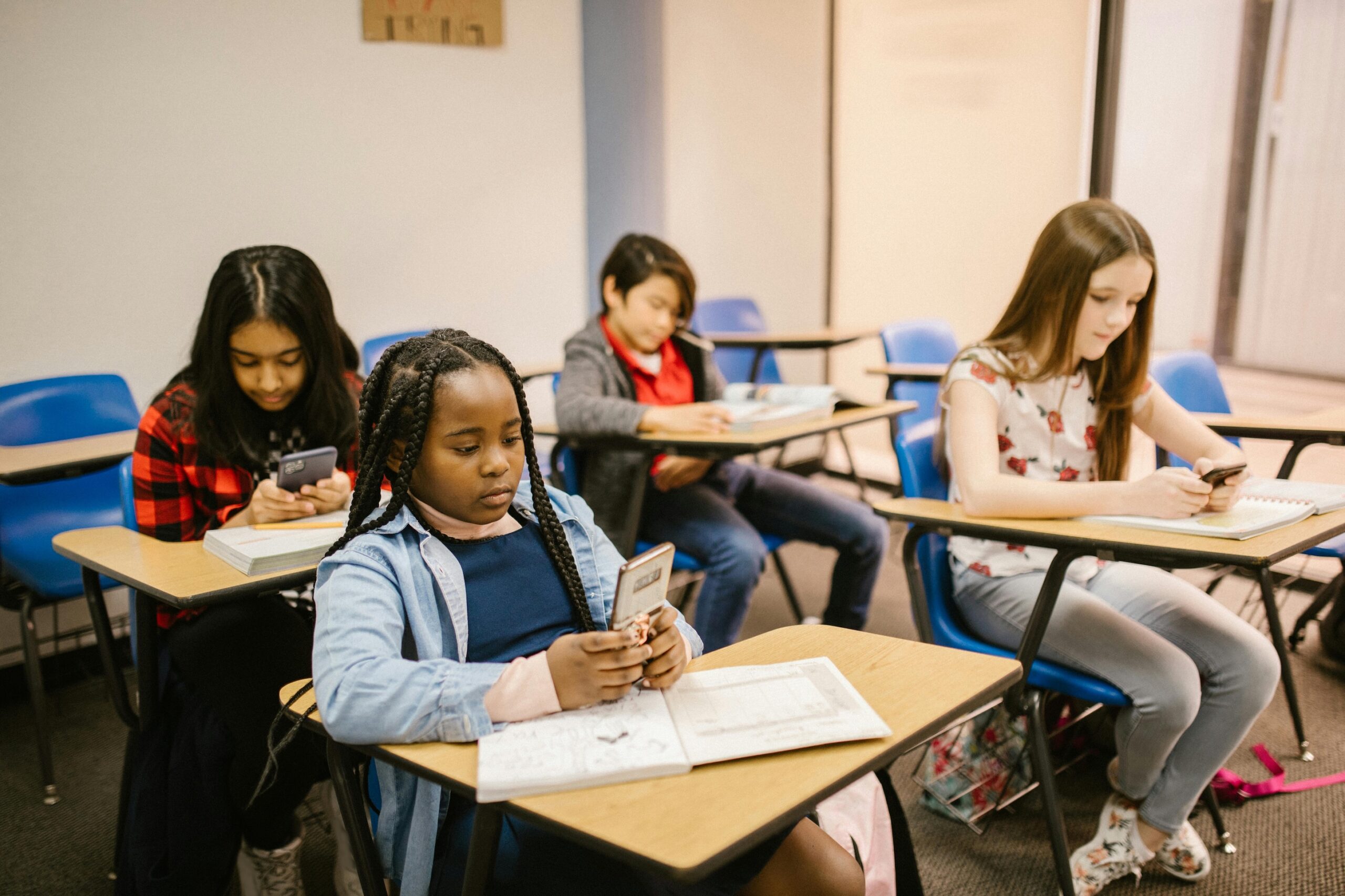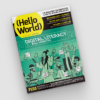Beyond phone bans: Empowering students to critically navigate and reimagine technology
Amidst heated discussion of smartphones and their impacts on young people’s lives, it’s become a frequent recommendation to ban phones in schools. Below I summarise the research evidence on smartphone bans (it’s mixed) and share tips for computing educators on how to constructively address the topic with their learners and empower them to think critically about technology design.

A turning tide
2024 was the year the tide turned against smartphones. Across the world, parents, teachers, and governments highlighted the risks of excessive phone use among young people. In the UK, the ‘Smartphone Free Childhood’ movement emerged, quickly growing to 100,000 members who advocate for keeping smartphones away from children due to concerns about addiction, harmful content, and mental health. Jonathan Haidt’s global bestseller The Anxious Generation has further fuelled the movement, linking smartphone use to adolescent mental health issues and recommending phonefree schools. Meanwhile, countries including England, France, and Finland have urged schools to adopt strict phone bans, hoping to reduce classroom distractions and enhance student safety.

Despite widespread support, academic research on phone bans remains limited and inconclusive. Given this situation, computing educators are uniquely positioned to offer an alternative approach.
Evaluating evidence on phone bans
The rapid spread of school smartphone bans is a straightforward response to complex issues around personal technology use in education. Teachers and parents frequently view phones as inherently disruptive, a perspective supported by studies that show phones can impair students’ focus and engagement in lessons. Concerns about cyberbullying and addiction contribute to this view, with many educators seeing bans as a practical solution to mitigate risks. Surveys in England reveal that nearly half of all secondary schools now enforce all-day bans. This trend was supported by teachers participating in my master’s degree research, who see these policies as necessary to reduce distractions and maintain control in the classroom.
“Calls for outright bans may oversimplify the conversation.”
Yet calls for outright bans may oversimplify the conversation, limiting opportunities to examine both the benefits and the risks of smartphone use in schools. Evidence on the impact of phone restrictions is mixed: while some studies suggest restrictions may benefit learning, especially for students who struggle the most, others indicate no significant impact on academic outcomes. Additionally, recent findings show that cyberbullying is not directly linked to time spent online, with traditional bullying still more prevalent in schools. Even the narrative around smartphone addiction is contested, with some researchers suggesting that concerns about addiction may be overstated. And some schools do not have access to digital devices for learners and then smartphones may play a crucial role in teaching and learning digital literacy skills.

As the debate over smartphone bans continues, educators have an opportunity to move beyond restrictions and engage students in understanding the technology that shapes their lives. This is where computing educators can really make a difference. How can they guide students to understand why technology is designed to capture attention and what lies behind these design choices?
Understanding and questioning the design of technology
School smartphone bans can feel like a hopeless act that suggests phones and social media are inherently incompatible with learning and student well-being. This approach assumes the only solution is to remove them, rather than considering how these technologies might be better managed or reimagined to support young people. What if, instead of banning phones, educators worked with students to explore why they are so captivating and how they could be designed differently? Computing educators can lead this exploration. With digital literacy as part of their curriculum, computing teachers can help students question the motives behind their devices, fostering a critical understanding of the forces shaping their digital world.
“With digital literacy as part of their curriculum, computing teachers can help students question the motives behind their devices, fostering a critical understanding of the forces shaping their digital world.”
At the heart of how social media platforms are designed is their business models. Tech companies rely on features such as notifications, autoplay, and infinite scrolling to maximise user engagement and revenue. This is part of what the writer Shoshana Zuboff calls “surveillance capitalism”, where companies gather vast amounts of behavioural data by keeping users engaged on their platforms for as long as possible.
In the classroom, educators can open discussions with students on the motives behind technology design, exploring questions such as why platforms want users to stay engaged, and what data they are collecting. Activities might include analysing popular apps to identify which features encourage prolonged use, or debating how social media could be designed to prioritise user wellbeing. By critically examining these design choices, students can better understand the forces driving their digital interactions and consider ways in which technology could be reimagined to serve them, rather than just profiting from them.
Collaborative policymaking
Once young people understand why phones and social media are designed the way they are, educators can work with students to create phone policies that reflect shared values and goals. This collaborative approach encourages students to take ownership of their technology use, and computing teachers, drawing on their knowledge of technology design and digital literacy, are ideally positioned to facilitate these discussions.

Research suggests that policies developed with student input are more effective, as they foster responsibility and engagement. By involving students in policymaking, educators can encourage them to consider how phones could support rather than hinder learning. For example, students might agree that phones should stay off during certain times, or in certain spaces, but that they might be useful in other scenarios where access benefits learning. This kind of flexibility ensures that phones are used thoughtfully, allowing for both practical boundaries and opportunities for educational use.
Critical skills for navigating the digital world
As debate around smartphone use in schools continues, academic research remains inconclusive on the effectiveness of phone bans. This uncertainty presents computing educators with an opportunity to move beyond restrictive policies and foster deeper understanding. By guiding students to explore why phones and social media are designed to capture attention, we can help to equip them with the critical skills needed to navigate their digital world thoughtfully. Involving students in crafting flexible, meaningful phone policies reinforces this understanding, giving them a sense of agency in shaping technology’s role in their lives.

Computing educators are uniquely positioned to empower students, not just as users, but as active challengers of technology design norms. Embracing a collaborative approach allows computing educators to inspire students to envision a future where technology genuinely serves their growth and their learning, rather than commercial interests.
More on digital literacy for young people
A version of this article appears in the newest issue of Hello World magazine, which is all about teaching digital literacy. Explore issue 26 and download your free PDF copy today.
You can also listen to our recent Hello World podcast episode discussing the myth of the ‘digital native’ and whether today’s young people are tech-savvy or tech-dependent.







1 comment
Jump to the comment form
Dalton Starnes
This is a thoughtful and timely article that goes beyond the usual “ban or allow” debate. I appreciate the focus on empowering students to critically engage with technology rather than simply restricting access. Encouraging digital literacy and responsible use is far more sustainable in the long run. It’s great to see educators being urged to guide students in reimagining tech’s role in their lives. This balanced approach is much needed today.